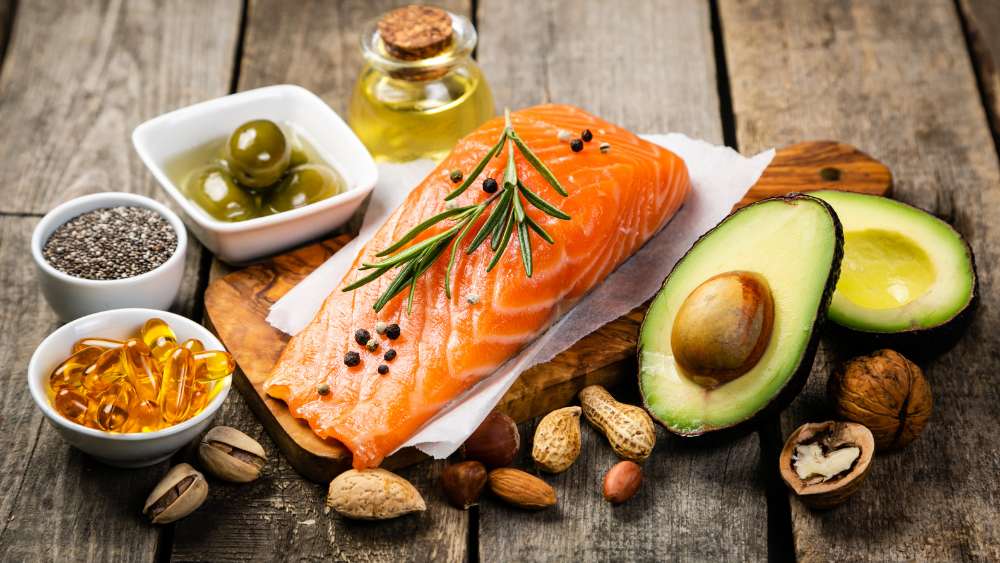For many years, fat was unfairly painted as the villain behind poor heart health and weight gain. This misconception led to the rise of “low-fat” diets — a trend that, as we now know, did more harm than good.
The truth? Your body needs fat. Healthy fats are essential for energy, hormone balance, brain function, and overall wellbeing. The key lies in knowing which fats to include — and which to avoid. Let’s unpack the four main types of fats you’ll find in food and how they affect your health.
1. Monounsaturated Fats
These are the heart-healthy heroes of the fat family. Monounsaturated fats are typically liquid at room temperature but solidify when chilled. You’ll find them in olive oil, avocado oil, nuts, and seeds.
They help improve cholesterol levels, reduce inflammation, and may even support blood sugar control and weight management. These are the everyday fats you’ll want to keep stocked in your kitchen.
2. Polyunsaturated Fats
Polyunsaturated fats can be a little tricky. When found in their natural form — such as in fatty fish (like salmon or sardines), flaxseeds, chia seeds, walnuts, and hemp seeds — they’re incredibly beneficial. These fats help fight inflammation and support heart and brain health.
However, processed versions of polyunsaturated fats tell a different story. Oils like canola, soybean, safflower, and generic “vegetable oil” often undergo heavy refining, stripping away nutrients and turning them into pro-inflammatory fats.
👉 Stick to unrefined, cold-pressed, or natural sources for the healthiest results.
3. Trans Fats
Here’s the type you’ll want to completely avoid. Trans fats are artificially created by adding hydrogen to vegetable oil to extend shelf life. The problem? They wreak havoc on your health — raising bad cholesterol (LDL), lowering good cholesterol (HDL), and increasing your risk of heart disease and inflammation.
They often hide in fried foods, margarine, baked goods, and packaged snacks. When checking labels, beware of ingredients like partially hydrogenated oils, shortening, or hydrogenated vegetable oil — these are major warning signs.
4. Saturated Fats
Once considered “bad,” saturated fats have earned a more balanced reputation. They’re solid at room temperature and found in foods like coconut oil, ghee, eggs, and certain meats.
In moderation and from high-quality sources, saturated fats can actually support immune function, hormone production, and brain health. They also help raise HDL (good cholesterol) — making them an important, though not overused, part of a healthy diet.
Choosing and Using Fats Wisely
Even when you’re using healthy fats, quality and cooking method matter. Heating oils past their smoke point can cause them to break down and form harmful compounds.
Here’s a quick guide to choosing the right oil for the right purpose:
-
High-heat cooking (frying, sautéing): Use avocado oil or coconut oil — they’re stable and safe at high temperatures.
-
Medium to high heat (roasting, baking): Try olive oil or peanut oil.
-
Cold uses (dressings, drizzling): Opt for flaxseed, walnut, sesame, or macadamia oil for delicate flavor and nutrition.
The Takeaway
Fat isn’t your enemy — it’s a vital nutrient your body depends on. By choosing the right types of fats and using them correctly in your meals, you can support your heart, brain, and overall health.
So, go ahead — enjoy that drizzle of olive oil or that creamy avocado. When it comes to nutrition, it’s not about cutting out fat; it’s about choosing the good ones and using them wisely.

